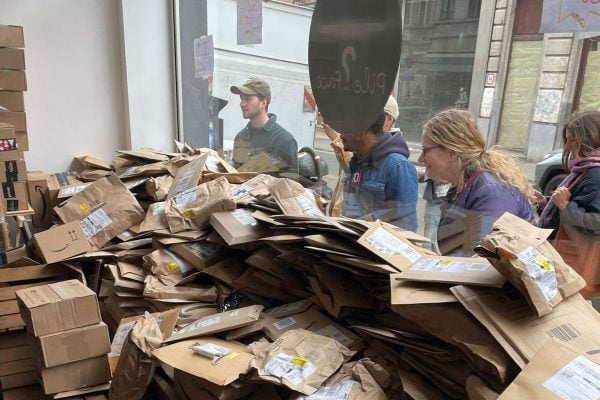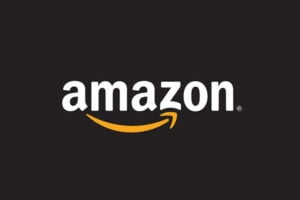As the global pandemic wreaked havoc on businesses around the world, ecommerce saw unprecedented growth. Amazon was one of the biggest winners recording a total gross merchandise volume of US$490 billion in 2020 with over 50% coming from third-party sellers; this rapid growth on the marketplace is expected to continue for the coming years. In other words, there has never been a better time to own (and consider selling) your Amazon brand.
Companies acquiring successful brands on Amazon have raised nearly US$6B of capital since April 2021. They are commonly referred to as “aggregators” and although, these companies may look similar on the surface, there are nuances in terms of what types of businesses they look for and how they operate the businesses that they acquire. If you are looking to sell, how do you know which company to approach? We interviewed a spokesperson from SellerX to find out what sets them apart from the rest and what business owners should expect if they decide to work with them.
What’s the story behind SellerX?
 SellerX is the creation of two friends, Malte Horeyseck and Philipp Triebel, that met in Boston while attending Harvard Business School. After graduation, Malte moved to Brazil and built Latin American’s leading ecommerce platform from scratch whereas Philipp moved to London and built-up a successful investing track record partnering and acquiring over 50 businesses across a wide-array of industries. Although, they were located on other sides of the world, they remained close and often discussed going into business together given their complimentary skillsets. In the summer of 2020, these conversations came to fruition and SellerX was born.
SellerX is the creation of two friends, Malte Horeyseck and Philipp Triebel, that met in Boston while attending Harvard Business School. After graduation, Malte moved to Brazil and built Latin American’s leading ecommerce platform from scratch whereas Philipp moved to London and built-up a successful investing track record partnering and acquiring over 50 businesses across a wide-array of industries. Although, they were located on other sides of the world, they remained close and often discussed going into business together given their complimentary skillsets. In the summer of 2020, these conversations came to fruition and SellerX was born.
What does SellerX do?
We buy and scale great Amazon-native brands! We provide a fair and transparent exit opportunity to sellers then help their businesses realize their full potential by investing capital and leveraging our operational expertise. First, we typically kick-off our process with an introductory call to get to know the seller, his or her situation, and unique business needs. Next, we gather the information we need to perform a valuation and submit an offer to purchase the business. Then, we work alongside the seller to finish our due diligence and close the transaction (usually takes 30 to 45 days). Finally, the brand joins the SellerX family and the seller gets rewarded for building a successful Amazon business.
Why would someone want to sell their business to SellerX?
Our personal, down-to-earth, tailored approach to working with sellers. The “X” in SellerX represents the independent variable and the simple fact that every seller is different. We understand that what works for one seller might not work for another. Therefore, we always go the extra mile to customize our approach to what’s going to work best for each seller and their business. We are here to help regardless of the specific circumstances (simply curious, looking for advice, tired of the day-to-day execution, looking to retire, pursuing another venture, fulfilling a personal dream, etc.) that led the seller to reach out to us in the first place. Our global and diverse team has world-class operational experience, is located across multiple continents, speaks over 20 different languages, and has experience transacting with sellers in over 10 countries. If someone sells their business to us, they’re selling to people who care and will put their hearts into maximizing its growth potential.
What types of businesses does SellerX look for?
SellerX looks for Amazon-native brands with a demonstrated track record of success and lots of room for further growth through optimization or expansion initiatives (think new geographies, new channels, and new products). From a financial perspective, we generally like to see businesses that have reached a certain size threshold (≥1M revenue) and are growing quickly (≥30% year-over-year) with strong margin profiles (≥20% contribution margins). From an Amazon perspective, we love brands with competitive “review moats” in their product niches; in other words, lots of high-quality (<4.3 stars) and authentic customers reviews that translate to high organic searchability across popular keywords. In addition, we tend to focus on enduring product categories where we see long-term sustainable demand and avoid those that we perceive as faddy or temporary in nature. To be clear though, sellers don’t need to meet all the above prerequisites to be considered by us.
How does a seller figure out how much his or her business is worth?
Businesses are valued by applying a multiple (usually ≥3.0x) to the Seller’s Discretionary Earnings (SDE) generated over the last twelve-month (LTM) period. For example, if a business generated 500K of LTM SDE and is determined to be valued at a 3.0x multiple then it would be worth 1.5M. However, for a given seller to figure out how much his or her business is worth requires a better understanding of both (1) how multiples are determined and (2) how SDE is calculated.
First, a valuation multiple takes into consideration multiple (no pun intended) factors such as but not limited to the size, growth, margin, and track record of the business. For example, a business doing over 1M in sales, growing at ≥30% annually, ≥20% contribution margins, and two years of history would receive a higher multiple than a business with <1M in sales, declining or flat growth, around 10% contribution margins, and only one year of history (assuming all other factors are similar).
Second, SDE is a cash-flow based measure of business earnings in an owner-operated business. It comprises the profit before tax and interest of a business before the owner’s benefits, non-cash expenses, extraordinary one-time investments, and other non-related business incomes and expenses. It’s similar to the popular financial metric known as EBITDA (earnings before interest, tax, depreciation, and amortization) but adjusted/normalized for certain line items.
Our recommendation to any seller would be to reach out if they want to learn more about the above as our investment team is more than happy to offer a free valuation and exit planning advice for their business even if they aren’t looking to sell at this exact moment.
How long do sellers need to stay involved with the business after it is acquired?
This is determined on a case-by-case basis depending on the seller, his or her situation, and unique business needs. However, there is always a transition period once a deal closes where the sellers help ensure a smooth transfer of the brand to our onboarding and operations teams. This ranges in terms of both length and level of involvement. On one hand, we’ve had sellers that only stayed on board for 3 months on an unpaid basis to facilitate the required knowledge transfer. On the other hand, we’ve had sellers opt to stay involved with the brand for up to 12 months or longer on a paid basis (usually as a contractor or strategic advisor but sometimes even as a full-time SellerX employee).
Case Study – Tritart
 Jakob Immel, the founder of the art supplies brand Tritart, was the first entrepreneur to sell his business to SellerX. He built Tritart while studying in art school after he and his friends became irritated by the lack of affordable high-quality art supplies available to them. Jakob acted on the opportunity, found a great supplier, placed a few bulk orders, and then started selling product to his fellow students.
Jakob Immel, the founder of the art supplies brand Tritart, was the first entrepreneur to sell his business to SellerX. He built Tritart while studying in art school after he and his friends became irritated by the lack of affordable high-quality art supplies available to them. Jakob acted on the opportunity, found a great supplier, placed a few bulk orders, and then started selling product to his fellow students.
Before long, Tritart launched on Amazon and continued to rapidly grow, receiving excellent customer reviews due its high-quality products and relentless focus on customer satisfaction. Eventually, Jakob decided it was time to move on to focus on other projects and was referred to SellerX. He met with Malte and Philipp and after a few conversations knew that they were the kind of people that would follow-through on their actions and take good care of his brand.
“Malte drove from Berlin to meet me at my home in Leipzig… we sat together on the balcony, had a few drinks, and he answered all my questions and concerns about the sale process in an open and transparent manner. I still remember the celebratory toast that we did when the sale finally closed. It was a lot easier for me to let go of Tritart than I expected because I knew it would be in the right hands with the team at SellerX”
– Jakob Immel
What should a seller do if they’re interested in learning more?
 Jakob Immel, the founder of the art supplies brand Tritart, was the first entrepreneur to sell his business to SellerX. He built Tritart while studying in art school after he and his friends became irritated by the lack of affordable high-quality art supplies available to them. Jakob acted on the opportunity, found a great supplier, placed a few bulk orders, and then started selling product to his fellow students.
Jakob Immel, the founder of the art supplies brand Tritart, was the first entrepreneur to sell his business to SellerX. He built Tritart while studying in art school after he and his friends became irritated by the lack of affordable high-quality art supplies available to them. Jakob acted on the opportunity, found a great supplier, placed a few bulk orders, and then started selling product to his fellow students.
Before long, Tritart launched on Amazon and continued to rapidly grow, receiving excellent customer reviews due its high-quality products and relentless focus on customer satisfaction. Eventually, Jakob decided it was time to move on to focus on other projects and was referred to SellerX. He met with Malte and Philipp and after a few conversations knew that they were the kind of people that would follow-through on their actions and take good care of his brand.
“Malte drove from Berlin to meet me at my home in Leipzig… we sat together on the balcony, had a few drinks, and he answered all my questions and concerns about the sale process in an open and transparent manner. I still remember the celebratory toast that we did when the sale finally closed. It was a lot easier for me to let go of Tritart than I expected because I knew it would be in the right hands with the team at SellerX”
– Jakob Immel
We’re happy to connect with sellers regardless of their situation. Whether they’re looking to sell now, for advice on exit planning in the future, or even just curious about the valuation of their business; our door is open at SellerX. The best way to get in touch is to fill out this contact form, visit our website, or email us at [email protected].










